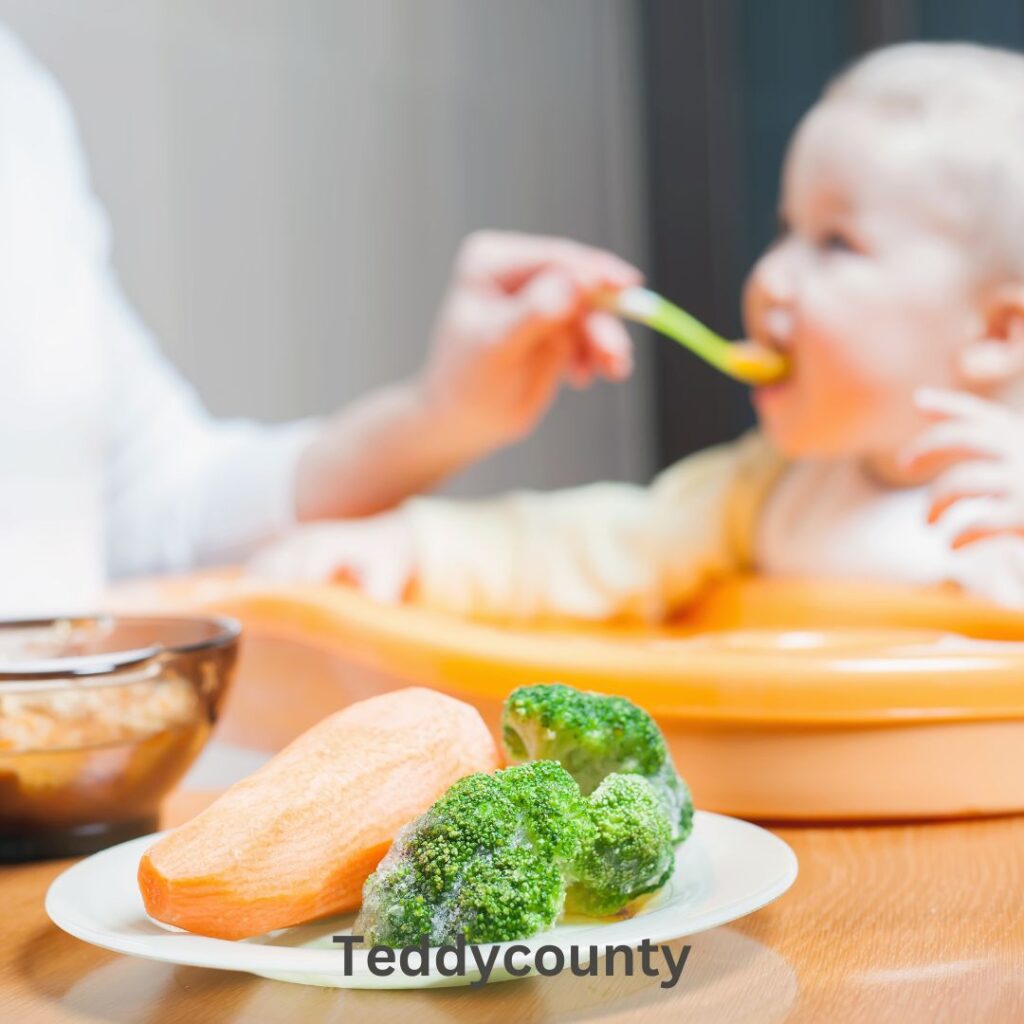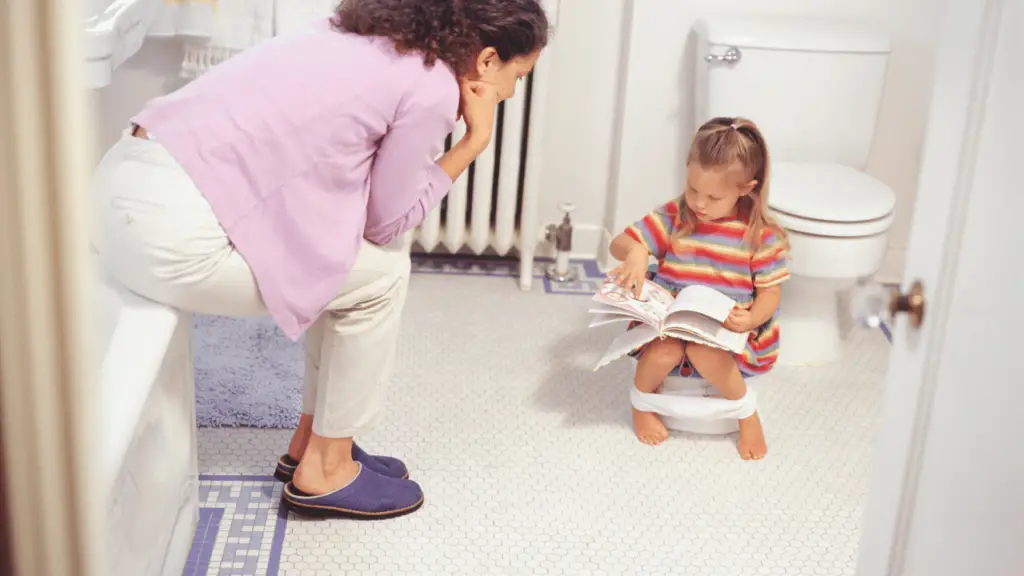Navigating Early Feeding: Can I Let My 3-Month-Old Baby Taste Food?
Whether your baby is already three months old or not, you might be wondering whether you can let him or her taste food now. Can I let my baby taste the food at 3 months? While you’re probably not going to let your baby taste anything at three months, there are some things you can do to help her or him enjoy the taste of food.

Can I let my baby taste food at 3 months?
According to the American Academy of Pediatrics, it is not advisable to introduce solid foods to your baby at 3 months. The recommended age is around 6 months, when the baby’s digestive system is more developed and can handle new foods. Introducing solids too early can lead to food allergies and other health complications.
What are some signs that my baby is ready to start trying solid foods?
Here are some signs that indicate your baby may be ready to start trying solid foods:
Age: Most babies are ready for solid foods between 4 and 6 months of age. Before this time, their digestive systems may not be fully developed to handle solid foods, and their primary source of nutrition should be breast milk or formula.
Head and neck control: Your baby should be able to hold their head steady and sit upright with support. This is important for safe and effective swallowing.
Sitting with support: Your baby should be able to sit in a supported high chair, infant seat, or your lap with good head control. This helps them maintain an upright position while eating.
Interest in food: Your baby may show curiosity and interest in what you are eating. They may watch you closely, reach for your food, or mimic chewing motions.
Loss of tongue-thrust reflex: The tongue-thrust reflex is a natural reflex that helps protect babies from choking by pushing food out of their mouths. As they grow, this reflex diminishes, allowing them to move food from the front of the mouth to the back for swallowing.
Increased appetite and demand for frequent feedings: If your baby seems consistently hungry even after breastfeeding or bottle-feeding, it may be a sign that they are ready for solid foods. Keep in mind that this alone may not be a reliable indicator and should be considered alongside other signs.
Feeding your baby through the first year of their life
Feeding your baby during their first year is a journey full of growth, learning, and bonding. Initially, your newborn’s diet will consist solely of breast milk or formula, providing all the necessary nutrients for early development. As they grow, around the 4-6 month mark, you can introduce solid foods, starting with iron-fortified baby cereal, pureed fruits, and vegetables. This gradual introduction helps them adapt to different textures and tastes while also monitoring for any allergic reactions. It’s essential to balance patience with persistence, as your baby might initially reject new foods. By the end of their first year, your baby will likely be enjoying a variety of finely chopped, soft foods, marking the beginning of their lifelong eating journey.
The first food for a baby
After 6 months, you can start feeding your baby finger foods. These foods can be introduced in small amounts and should be mashed into soft bite-sized pieces. They encourage hand-eye coordination and help your baby learn to feed himself or herself.
At first, your baby may not like the taste of new foods. However, it is important to introduce variety to give your baby a good start in life. During this time, your baby should only be introduced to foods that do not contain additives such as sugar.
Your baby’s doctor can help you decide if he or she is ready for solids. You should give your baby at least two healthy snacks in between meals. It is important to remember that babies do not need to be fed every two hours.
It is also important to make sure that your baby is getting sufficient amounts of iron. This can be found in dark green vegetables, meat, and beans. If your baby isn’t getting enough, you should discuss a supplement with your doctor.
What is the Difference Between Commercial and Homemade Baby Food
The main differences between commercial and homemade baby food are the source, preparation method, ingredients, and control over the food’s quality. Here’s a breakdown of each:
Source: Commercial baby food is typically mass-produced and packaged by baby food companies, while homemade baby food is made at home by parents or caregivers.
Preparation method: Commercial baby food undergoes extensive processing, including cooking, pureeing, and packaging. It is often available in jars, pouches, or trays. Homemade baby food is prepared from scratch using fresh ingredients and can be cooked, mashed, pureed, or blended depending on the baby’s age and stage of feeding.
Ingredients: Commercial baby food generally contains a limited selection of ingredients and may include additives like preservatives, thickeners, or sweeteners. On the other hand, homemade baby food allows you to have complete control over the ingredients. You can use fresh fruits, vegetables, grains, meats, and other wholesome foods without any additives or preservatives. This gives you the flexibility to tailor the flavors and textures to your baby’s preferences and dietary needs.
Quality control: When making homemade baby food, you have direct control over the quality and freshness of the ingredients. You can choose organic or locally sourced produce, and you can ensure proper hygiene during food preparation. With commercial baby food, you rely on the manufacturer’s quality control processes and ingredient sourcing practices.
Nutritional value: Both commercial and homemade baby food can provide adequate nutrition for your baby. Commercial baby food often undergoes testing to ensure it meets nutritional standards. Homemade baby food allows you to customize the nutrient content and variety of foods based on your baby’s needs and preferences.
Cost: Commercial baby food can be more expensive than homemade baby food, especially if you are purchasing individual jars or pouches. Homemade baby food allows you to save money by buying fresh ingredients in bulk and preparing larger batches.
It’s important to note that both commercial and homemade baby food can be suitable options for feeding your baby. Some parents may choose to use a combination of both, depending on convenience, time constraints, and personal preferences. If you decide to make homemade baby food, ensure that you follow proper food safety guidelines, introduce new foods gradually, and consult with your pediatrician for specific recommendations based on your baby’s needs.
Introduce vegetables to your baby

Introducing vegetables to your baby at four months is not a bad idea. However, you should also be careful. There are plenty of choking hazards. To avoid these, you should start by chopping foods into small pieces. Then, you can mash them with a fork.
Some foods may need to be cooked for a short time until they become soft enough to mash with a fork. For example, you can use a fork to mash cooked peas. Similarly, you can mash a banana or a whole grape.

Introducing dairy foods to your baby
Your baby should also be introduced to dairy foods. Cow’s milk is safe to drink, and you can use it to make other dishes, such as yogurt or cheese. But be sure not to mix dairy with foods with high concentrations of fat or salt.
Your baby will also begin to recognize when he or she is full. This will help them learn to feed themselves. The goal is to get your baby to try different foods by introducing them one at a time. If your baby doesn’t like the taste of a particular food, try another one.
Another helpful tip is to give your baby water with meals. At six months of age, you can offer your baby cooled, boiled water. This will help your baby develop fine motor skills and a taste for water.

How Do I Start Feeding My Baby Solids?
When you begin introducing solid foods to your baby, it’s important to create a calm and comfortable environment for the feeding experience. It’s not just about providing nourishment but also teaching them how to eat. Think of it as a milestone in their journey of growth and development.
Choose a quiet and peaceful setting for feeding. Initially, your baby may approach these first bites as a playful exploration rather than a full meal. Let them enjoy the experience and have fun. It’s all part of their learning process.
To ensure your baby’s safety and monitor for potential allergies, introduce one type of food at a time. Wait for at least three days before introducing a new food. This allows you to observe any adverse reactions and easily identify the cause.
Take it slow and start with small portions. Remember, your baby’s main source of nutrition is still breast milk or formula. At this stage, solids are merely complementary to their primary diet.
By following these guidelines, you can help your baby transition smoothly into the world of solid foods, fostering their development and exploration of new tastes and textures.
Avoiding power struggles with baby food
Trying to figure out what the best baby food is for your little one is not as stressful as it sounds. The secret to successful feeding is to trust your little one and let them do the talking. One of the most rewarding experiences is watching them learn to enjoy and appreciate the fruits of their labor. Fortunately, there are many ways to do this. For example, you can feed them a mix of baby food and let them pick what they like, preferably in the safety of their bedroom.

The Temptation of Early Tastes: Shanzae’s Journey
I’m bursting with excitement to share the story of my adorable daughter, Shanzae. As a new mom, I was constantly intrigued by the mysteries of parenthood, and one of my burning questions was whether I could let my little one taste real food at just 3 months old. Shanzae, with her wide-eyed wonder, seemed eager to explore the world, including whatever was on my plate. But, as they say, wisdom often comes from the most unexpected sources, and in our case, it came from our pediatrician.
At 2 months old, Shanzae was a bundle of curiosity. Her sparkling eyes seemed to say, “I’m ready for the world!” I couldn’t help but wonder if she was ready for the world of flavors too. Her tiny fingers would reach out for my food during mealtime, as if she knew there was a whole universe of tastes waiting for her.
So, I decided to bring up the idea of letting Shanzae have a little taste of food at her next pediatrician’s appointment. I mean, who could resist that adorable, eager face? But it turned out that our pediatrician had some wise advice for us.
She gently explained the importance of exclusive breastfeeding, or formula feeding, for the first six months of life. She emphasized that Shanzae’s tummy wasn’t quite prepared for the adventure of solids just yet. As much as I wanted to see her cute reactions to different flavors, I had to admit that our pediatrician’s words made a lot of sense. The idea of her tiny digestive system still maturing made me take a step back.
So, I decided to put our culinary adventures on hold until Shanzae reached the magic age of 6 months, as per our pediatrician’s advice. During those initial months, I cherished the moments of nursing, knowing that breast milk was giving her the perfect blend of nutrients and protection.
In hindsight, I’m truly grateful for our pediatrician’s guidance. It wasn’t easy to resist the temptation of satisfying my curiosity, but knowing that I was making choices in the best interest of Shanzae’s health and development gave me peace of mind. As Shanzae continued to grow, I eagerly anticipated the day when we could dive into the exciting world of flavors together, one tiny spoonful at a time.
Ultimately, being a mom is all about making choices that put your child’s well-being first. Even when your heartstrings are tugged by curiosity, Shanzae’s health and happiness have always been my top priorities. I can’t wait to watch her grow and explore the world, one milestone, and one flavor at a time.
Conclusion
While it’s natural to be eager to introduce your baby to new tastes and textures, most health experts recommend waiting until around 4-6 months before starting solid foods. Introducing solids earlier than this can pose risks such as choking hazards and underdeveloped digestive systems. Each child’s readiness for solid foods varies, and it’s important to look for signs of readiness in your baby, such as being able to sit up with support and showing interest in foods. To ensure the best for your baby’s health and development, it is advisable to consult with your pediatrician before beginning any solid foods.



